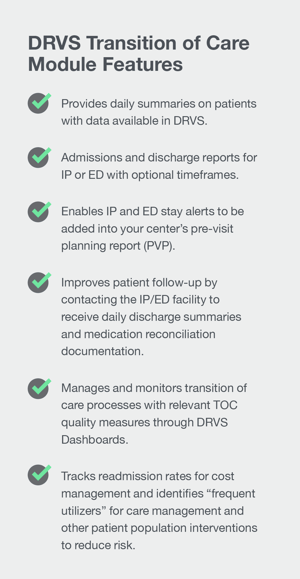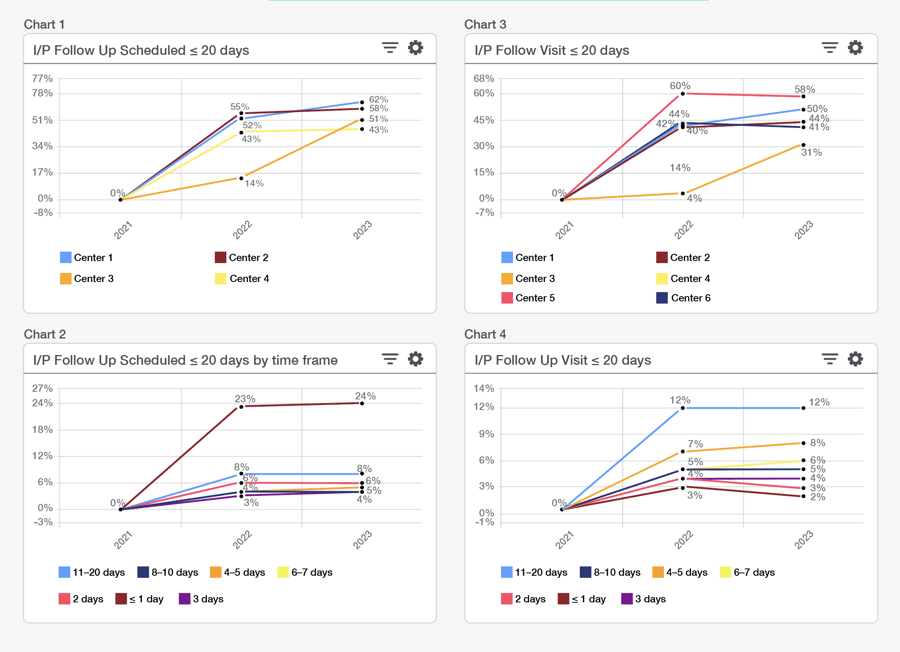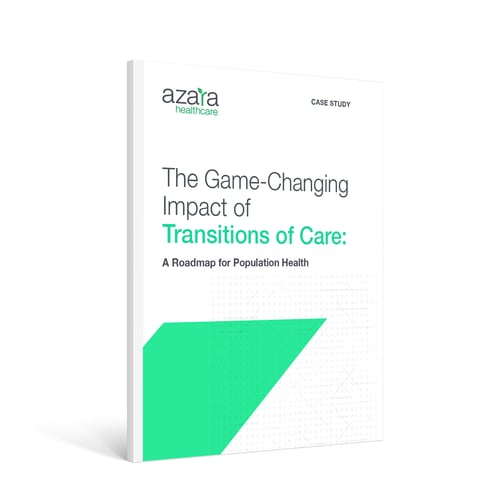The Game-Changing Impact of Transitions of Care:
A Roadmap for Population Health

The Client
The Indiana Primary Healthcare Association (IPHCA) is a statewide organization dedicated to improving primary care for vulnerable and underserved Hoosiers. Founded in 1982, IPHCA supports 98 percent of Indiana’s community health centers (CHCs), which provide medical, dental, mental health, and behavioral health services to the state’s most underserved communities.
Indiana faces significant health and economic challenges. Roughly 90% of CHC patients have incomes 200% below the poverty level. With approximately 12% of Hoosiers living below the poverty line and 17% lacking health insurance, CHCs have emerged as a pivotal response. IPHCA plays a crucial role in providing CHCs with the technology, training, and infrastructure to deliver high-quality care.
The Initiative
In response to the growing need for improved population health management, IPHCA, in collaboration with the Indiana Health Information Exchange (IHIE), the Indiana Family Social Services Administration (FSSA), the Indiana Department of Health (IDOH), and Azara Healthcare established a groundbreaking initiative to optimize the state’s HIE data and integrate it into a population health analytics platform.
Known as Project UTILIZE (Utilization Tracking: Information Linking with IHIE through Azara Exchange), the state’s bold endeavor sought to unify clinical, SDOH and HIE data across Indiana for effective transitional care and population health management. IPHCA needed a solution which could help CHCs reduce readmissions, improve patient engagement, identify interventions, and ultimately improve the health and lives of their patients.
 The Solution
The Solution
The project was not only a unique opportunity for CHCs to join a common platform, but also to address one of the state’s most pressing challenges: ensuring primary care follow up for patients discharged from emergency departments or inpatient hospital stays.
Utilizing Azara’s DRVS population health management platform, in conjunction with IHIE’s CareWeb, ADT data from multiple organizations is merged with EHR data enabling timely access to a comprehensive view of the CHCs patients recently discharged.
With the Azara DRVS Transitions of Care Module (TOC), care teams could view critical details including date and time of admission, diagnosis, and disposition for the episode of care combined with appointment and care gap data from the EHR. By implementing Azara DRVS and the TOC Module, alongside IHIE’s CareManager product, CHCs are better informed—they can more efficiently contact patients, recognize issues with medications or treatment plans, provide education, and appropriately schedule follow-up care.
The Results
Through this partnership, IPHCA and Azara have successfully addressed the challenge of limited access to comprehensive healthcare data by implementing Azara’s advanced technology solutions. This case study highlights the transformative impact of Azara’s technology on IPHCA’s data-driven decision-making process and the resulting positive outcomes for patients and healthcare providers.
Since 2020, the Project UTILIZE collaboration, ADT alerts from emergency departments and inpatient settings were implemented across 20 community health centers across Indiana, benefiting over 450,000 patients. In 2023, the Transition of Care IP/ER report was the second most frequently run report across the network (after the Patient Visit Planning tool) and reflects the management of IP/ER events into practice workflows.
A post implementation survey of centers revealed that 80% of practices saw a significant impact to their TOC programs calling it a “game changer’ to their operations. Practices spent less time overall, but specifically in identifying and prioritizing patients with discharge events that required follow-up.
Improvements in transitional care management are closely tied to a practice’s ability to dedicate resources to the efforts. This work started during the pandemic, and post pandemic the ability to maintain resources remains a significant challenge.
Despite these challenges, Indiana health centers saw the following improvements in patients with an inpatient discharge:
- Follow-up appointments scheduled improved 6.1% with the largest improvements in those scheduled within 0-2 days from 2022 – 2023 (Chart 1, 2).
- Follow-up visits after discharge improved 2.6% with a 14-20% improvement for visits occurring between 4-7 days.
- Additionally, those practices that had a structured process to document follow-up calls saw an increase in follow-up calls.

These efforts demonstrate a substantial improvement in timely post-discharge care, especially when the practice is able to monitor progress and implement changes based on results. It should also be noted that during this time there was a 25% increase in ADT events.
“The DRVS TOC Module has completely revolutionized our patient engagement efforts and transformed the way we provide post-discharge follow-up care. The term ‘game changer’ is something we heard a lot of. This tool has invigorated our entire team, sparking a newfound enthusiasm and dedication to improving patient outcomes.” - Maggie Kroeff Streiff, Quality and Population Health Director at IPHCA.
“ADT Alerts clearly were an improvement from the prior non-automated methods of determining when ADTs happened,” said Dr. Steven Waltz, MD of Valley Professionals Health Center. “Once the IHIE/Azara ADT Alerts were in place, RNs leading the transitional care contact and PCPs involved in overseeing that care, immediately appreciated the improvement in timeliness of follow-up, scheduling, and pre-visit data assimilation, which improves care and patient experience. Ultimately, it makes healthcare personnel more satisfied with the services they provide.”
This visionary project not only represents a unique opportunity for collaboration and innovation, but also signifies a crucial step forward in leveraging data-driven insights to drive meaningful improvements in healthcare delivery.
“The TOC Module has revolutionized our care managers’ patient engagement strategies, resulting in exceptional post-discharge follow-ups and a remarkable reduction in readmissions,” said Kroeff Streiff. “By harnessing the power of technology and stakeholder collaboration, Project UTILIZE, backed by the DRVS TOC Module, helps the care teams we support provide important care to the most vulnerable Hoosiers.”
A Look Ahead
Kroeff Streiff outlined several exciting initiatives for future transitions of care contributors, including funding opportunities for a third wave of community health centers to ensure all CHCs can effectively implement and benefit from the Azara DRVS TOC Module.
Additionally, because IPHCA recognizes the critical importance of the data received from ADTs and high utilizers, Kroeff Streiff said they will leverage this information to drive value-based care initiatives in Indiana, exploring opportunities to integrate and utilize the data in more innovative and impactful ways.
By pursuing these future plans, IPHCA remains dedicated to advancing transitions of care and improving healthcare outcomes for the community.
Ready to get started?
Learn more about how Azara DRVS and the TOC Module can support your organization by contacting your Client Success Manager or emailing solutions@azarahealthcare.com.

